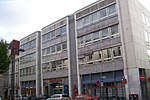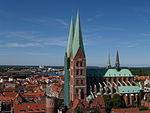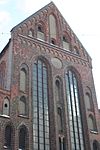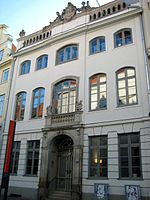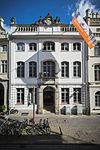Lübeck (German: [ˈlyːbɛk] (listen); Low German also Lübeek), officially the Hanseatic City of Lübeck (German: Hansestadt Lübeck), is a city in Northern Germany. With around 217,000 inhabitants, Lübeck is the second-largest city on the German Baltic coast and in the state of Schleswig-Holstein, after its capital of Kiel, and is the 35th-largest city in Germany. The city lies in Holstein, northeast of Hamburg, on the mouth of the River Trave, which flows into the Bay of Lübeck in the borough of Travemünde, and on the Trave's tributary Wakenitz. The city is part of the Hamburg Metropolitan Region, and is the southwesternmost city on the Baltic, as well as the closest point of access to the Baltic from Hamburg. The port of Lübeck is the second-largest German Baltic port after the port of Rostock. The city lies in the Northern Low Saxon dialect area of Low German.
Lübeck is famous for having been the cradle and the de facto capital of the Hanseatic League. Its city centre is Germany's most extensive UNESCO World Heritage Site. While the city's symbol is the Holsten Gate, Lübeck's skyline is dominated by the seven towers of its five main churches St Mary's, Lübeck Cathedral, St Jacob's (Jakobikirche (Lübeck)), St Peter's (Petrikirche (Lübeck)), and St Giles'. The cathedral, finished around 1230, was the first large brickwork church in the Baltic region. St Mary's, finished in 1351, served as model for the other Brick Gothic churches around the Baltic. It has the second-tallest two-steeples façade after Cologne Cathedral, which only surpassed it in 1880, the tallest brick vault, and is the second-tallest brickwork structure after St Martin's in Landshut. Travemünde is a famous seaside resort, and its Maritim high-rise serves as the second-tallest lighthouse in the world at 114 metres (374 ft) high. Lübeck is also known for Lübeck Marzipan.




